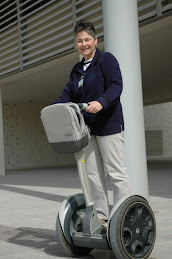I happen to love the apostle Thomas. He reminds me of most children I know. He asks the question everyone is thinking, but would never dare to say aloud.
“Mommy, why is that woman so fat?”
“Why does that kid look weird?”
“Daddy, how come we can’t have ice cream but Uncle Joe gives his kids ice cream AND soda?”
Invariably, the parent of such a child, a child with no filter between brain and mouth , turns beet red in embarrassment and then shushes their offspring. “Johnny, that’s not a nice thing to say!”
And equally predictably, the child has a follow-up at the ready, “But it’s TRUUUUUUUE!”
At which point the parent either hisses, “I’ll explain it to you about it later,” or says “Sorry” to the victim of the drive-by question, or hauls the kid off to a corner for a little chat about being rude.
And so it goes. Our social conditioning trains us to avoid the questions that are troublesome, but our children, not yet fully socially conditioned, jump right in and ask uncomfortable questions. Honest questions, yes, but uncomfortable. Oh, how we hate those questions!
The irony, of course, is that we ourselves are usually thinking those questions just as our child is piping up with them. Not that we would ever admit it, of course…we’re so much more polite than that. A teensy bit dishonest, but avoiding being rude is better than a little white lie, right?
Well, Thomas the disciple seems to have missed that lesson. He must have been an interesting child to raise, don’t you think?
He asks the obvious question when Jesus, raised from the dead, stands among the disciples in that locked room. Everyone’s nerves are on edge, of course. Who knows whom the authorities will come after next? But Jesus is suddenly there, and they may be excused for being shocked. After all that stress, a trick of the eyes, perhaps….how could it be? Jesus had predicted his resurrection, but to see him again…
But the disciples are too polite to say out loud “Is this for real?” because they are equally afraid that the answer is yes, in which case they are in the presence of the most extraordinary of miracles, or the answer is no, in which case they are all losing their minds.
But Thomas? Thomas is that one with no filter between brain and mouth. He says out loud what the others may, in the darkest recesses of their hearts, be thinking: “This is too bizarre. Unreal, even. Unless I actually touch him, touch the wounds, I’m not buying it.”
Thomas gets a bad rap…Doubting Thomas, they call him. But being a seeker, wanting to know what is really going on, challenging and trying to understand, isn’t that what we all try to do?
His level of understanding of all he had learned from Jesus is pretty basic, because he missed the opportunity to ask the more meaningful question: “This is bizarre. What am I supposed to understand from this experience?”
Ah, that’s a question! Not one we’d expect from one of our children, who go to the most basic issues.
Thomas, childlike, is looking for a physical answer to a spiritual phenomenon. He wants to get some physical evidence of what seems to be a miracle. What he should be seeking is a spiritual answer to a physical phenomenon. Here is the risen Jesus Christ in front of him, in the flesh. How does his understanding of Jesus as God change as a result of this?
It’s exactly what Jesus then tries to lead him to.
"Come over here, put your hands into these wounds. Do you believe it now? Have you believed because you now have the physical evidence? Okay, you’ve got what you wanted, but blessed are those who have not seen and yet have come to believe."
Blessed are those who have not seen and yet have come to believe. They start from faith, from the assumption that God is capable of anything, is more beautifully complex than we can comprehend, and then remarkably they begin to recognize God’s work around them and in them. They believe and then they see…
St Anselm of Canterbury, one of the great fathers of the church, put it this way: “I believe in order that I might understand.”
Miracles abound. We don’t see them unless we have a context for them. We believe, and then the unimaginable makes sense. The barren woman who conceives a child in old age. The first peony blooming in the garden in springtime. The cancer that was inoperable that has shrunk. A double rainbow. Tadpoles turning into frogs. The child who survives a horrific crash.
None of these things make sense in a merely scientific world, in a world where we seek physical evidence, our hands in the wounds, a world we try to make as small as our human minds can fathom.
But believe, then see how the Divine breath blows through this world in strange and wonderful ways.
Believe, and feel the rush of that breath in the garden, in the Risen Christ, in your hearts. Be blessed, and see.
If we believe, then the things that don’t make sense slowly begin to unfold. We no longer struggle to fit them into our human constructs, we see them for the expression of divine love and creativity that they are.
We are all Thomases, trying to treat Christ’s resurrection as if it were a mystery to be unraveled on an episode of CSI. Perhaps it is time to believe, and treat that Resurrection as if it were an exquisite work of art, a Michelangelo, a Picasso, to touch our hearts and open our minds to the depth and breadth and height of Divine gift.
Believe. What you will see if you try will amaze you.
Amen.







No comments:
Post a Comment